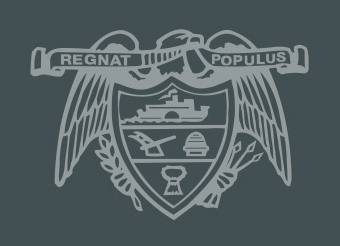
DEAR CAR TALK: I just love your crummy column, and I really enjoy antique cars. My favorite is the 1956 Ford Fairlane Sunliner. However, I recently discovered the 1957 Pontiac Star Chief, and it's quite a beautiful machine, as is the 1957 Bonneville.
But help me out ... other than some of the chrome detailing, those two Pontiacs look almost exactly the same. Why did Pontiac make two different models that look the same? And please don't use too much engine-ology in your answer; engine specifics make my eyes glaze over. Thanks.
— Jeanette
DEAR READER: Engine specifics make my eyes glaze over, too. That's why the guys at the shop will sometimes find me deep into a nap while working on a car, and they'll have to sneak up and give me a shot in the rear end with the air wrench to snap me out of it.
Car names are a mess, Jeanette. Manufacturers slap them on and remove them at will. So it almost takes a Kremlinologist to figure out what was what. But here's what we can tell you about the Pontiacs that interest you.
The 1957 Star Chief was Pontiac's top of the line model at the time. And the convertible version of it was a very pretty car. In fact, if you were a fan of the sitcom "I Love Lucy," you may remember that the car Lucy, Ricky, Fred and Ethel drove to California on the show was a Pontiac Star Chief (a 1955).
Anyway, Pontiac's sales were in the dumps at that time. So, to try to goose them, Pontiac created a new, high-performance version of the Star Chief Convertible. They loaded it with every conceivable option, put a crazy-high price on it ($5,782), and called it ... the Star Chief Custom Bonneville. So the Bonneville was just a high-end version of the Sky Chief in 1957. That's why you're having a hard time telling them apart. They're the same car.
The following year, in 1958, Pontiac decided to make the Bonneville its own, separate model. They stripped out all the expensive options they'd put in the previous year and lowered the base price to around $3,000.
By the way, you have very good taste, Jeannette. A well-maintained '57 Star Chief Bonneville would probably run you about $150,000 these days.
For a mere fifth of that, you can pick up that Fairlane Sunliner. Start hinting for your next birthday now.
DEAR CAR TALK: My wife owns a 2001 Honda Accord that acts up periodically, mostly in hot weather. When we talk to our mechanic, who is very good and has taken care of our cars for years, he scratches his head.
He tells us to bring it in when the problem occurs. I understand his request, but we're always on the road when the problem occurs. Maybe you can help.
The problem only happens in hot weather and when we've already been driving for quite some time. When we stop for a 20-minute break and get back into the car, it won't start.
When we turn the key, the starter will try to start it, but the engine won't catch and run. If we wait for several minutes, sometimes up to half an hour, it'll start, but it's a rough start, and we have to give it a lot of gas before it smooths out and runs normally.
Any direction we can point our crack mechanic in?
— Sid (for Sid and Carol)
DEAR READER: Yes. Point your crack mechanic toward the driver's side floorboards and have him get his head under the dashboard. Once he's there, he should look for the fuel pump relay. When he finds it, he can remove it, get another one from Honda and replace it, and your problem should be solved.
This is a classic problem with Hondas of this vintage. They've since fixed it, but we saw this pretty often back in the day. When you start the car, there's a relay that closes. When it closes, it sends power to your electronic fuel pump, which sends gasoline to your fuel injectors and into the engine.
What happens is that in hot weather, an older fuel pump relay can overheat. The conditions under which it typically overheats are after a long drive, when it's hot out and when you close up the car and allow the car's interior to get saunalike.
When that relay overheats, it won't close. And if it won't close, the electronic fuel pump doesn't work. And as even the knuckleheads at my shop can tell you, no fuel = no start.
After a while — usually while you're sitting there with the doors and windows open because it's — what? — hot in the car, the relay cools off and starts working again. Then it takes a little revving of the engine to get enough fuel back into the cylinders to get the engine running smoothly. And then it works fine. Until it doesn't again.
So ask your mechanic to replace the fuel pump relay, and you should be done with this problem, Sid. Then you won't have to take three changes of undershirts with you every time you take a day trip in the summer.
Ray Magliozzi dispenses advice about cars in Car Talk every Saturday. Email him by visiting cartalk.com
"car" - Google News
November 21, 2020 at 02:47PM
https://ift.tt/2J0m7H3
CAR TALK - Northwest Arkansas Democrat-Gazette
"car" - Google News
https://ift.tt/2SUDZWE
https://ift.tt/3aT1Mvb
Bagikan Berita Ini














0 Response to "CAR TALK - Northwest Arkansas Democrat-Gazette"
Post a Comment